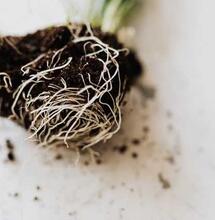Cannabis SCROG and What to Know Before Planting

There are many different methods of training cannabis plants, and one of the more extreme is the Screen of Green technique. SCROG grows allow an indoor grower to get the most out of their indoor space, and also produce large sized yields. In this article, I explain all you need to know about the Screen of Green method, the pros and cons, the best strains to use and 6 mistakes to avoid when growing cannabis using a screen.
What exactly does SCROG mean?
SCROG is an abbreviation of Screen of Green, which may sound very similar to Sea of Green (SOG), however is very different. Basically, using a screen placed over the canopy, combined with months of vegetation, training and pruning, cannabis plants are able to grow under and through the screen and occupy as much space as physically possible.
Everything under the screen prior to flowering will be pruned and left bare, so the plant can focus its energy entirely on the top canopy. A well experienced SCROG grower will be able to fill their screens fully, ensuring the final yield is well worth the time in the first place. The end result with be a top-heavy canopy similar to a garden hedge, with large sized cola.
The pros of using the SCROG method
- SCROG is perfect for growers growing 1–2 plants in a small space.
- The yield from a plant grown using SCROG will be very large.
- SCROG is an excellent way for growers to become hands on with their plant.
- Screens are easy to make and can be homemade to fit your grow space.
- Only large sized colas will be produced, eliminating small and undersized buds.
The pros of using the SCROG method
- SCROG grows require long vegetation periods of 18/6.
- Not all cannabis strains are best suited for SCROG.
- If something goes wrong, then you only have one plant to work with.
- Training plants with a SCROG can be stressful to some plants.
- The harvest date may be 4–5 months long with the SCROG method.
- Screens can be difficult to work around, limiting mobility and access.
The best strains to use for SCROG cannabis grows
From my experience, the best candidates for using screens are hybrids that have an open bushy structure, long side branches and are easy to bend and move through the screen. Sativa dominant hybrids can grow into enormous sized plants during the vegetative period and when flowered produce epic yields. Indica are a bit more challenging to work with due to their short stature and minimal stretch once flowering. For the best results, you should work with 50/50 hybrids or 75% sativa dominant.
6 Mistakes to avoid using the Screen of Green method
If it is your first time attempting the Screen of Green method, then there are a few common mistakes that you should avoid. Avoiding these mistakes will allow us to produce the best possible outcome, without being at a loss.
1. The screen hole size
Not every grower will use the same screen, with many options available such as chicken wire, garden pea netting, bamboo trellis or a fabric net. Making sure that the size of the holes in the screen are not too small is very important. Avoid buying wire screens the holes are smaller than 2 inches in diameter, and the more space you have to feed the shoots and side branches through, the better.
2. The height of the screen
The screen not only acts as support for the plant, but it will also be the point where the plants focus their energy on the top canopy. The height of the screen should be set at a point where, the growth below is totally bare and clean with no foliage whatsoever. Above the screen will be only crown shoots worthy of fist sized buds. Avoid placing the screen too low or high, and find the sweet spot between a fully pruned lower section and bushy top growth.
3. Recovery time between training
In order to manipulate your plant through the screen and slowly fill every space before flowering, you will need to incorporate several training techniques. Over the duration of the vegetative period, topping, low stress technique, super cropping and pruning can all be utilized, however in some cases can be a stressful time period. It is essential to allow the plant to fully heal between the different training techniques, so avoid being overzealous and allow 5–7 days between each technique to prevent stress.
4. Flowering too early
SCROG cannabis grows will require a longer time frame before harvesting due to the extensive training period during 18/6. Knowing the right time to flower the plant will make a massive difference in the final yield. Avoid flowering the plant too early, and only flower when the screen is totally filled out and there is a substantial-sized canopy above the screen.
5. Using short indica strains
You can still grow indicas plants with a screen and obtain great results, but if you can work with cannabis strains that have large internodal spacing and once flowered will increase in size by 300-400%, then the plant will be much more practical, especially for a beginner grower. Avoid using short indica plants with very little stretch once flowered.
6. Too many plants
If you are limited to indoor grow space, and fancy the idea of SCROG, then avoid growing more than one or two plants under the screen. Too many plants will only cause overcrowding, and in some cases making it difficult to access the plants comfortably. The best advice I can give is to use a sativa dominant hybrid and keep the plant count very low.
My conclusion
Screen of Green grows can be challenging with long vegetation periods, lots of nutrients and high electricity bills. However, when you do pull it off, the final yields can be well worth all the hard work and time. SCROG cannabis projects are ideal for learning the different plant training methods and tying them all together. I personally think that every indoor grower should attempt a Screen of Green grow, as the learning curve will set you up for the long run to become the best grower you can be!


.png)
